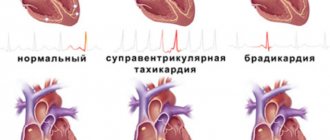Causes of cold sweat
Severe stress
The body’s protective reaction to any stressful situation is the release of hormones from the adrenal medulla (mainly adrenaline). This substance constricts the blood vessels of the skin and activates the sweat glands. A person feels profuse cold sweat, which appears in the form of drops, often in the head area, and sometimes can flow down in streams. This manifestation is typical for severe emotional shocks. Short-term sweating during stress is normal, but when it is combined with dizziness or fainting, medical attention is needed.
Migraine
A person breaks into a cold sweat at the height of a painful attack. In addition to severe headaches, the patient feels lightheaded, weak, and general sweating is observed. Your hands and feet are cold and clammy, and sweat may run down your face and neck. This condition persists throughout the migraine attack and disappears on its own after the pain stops. Severe pain provokes excess production of adrenaline, which causes sweating. Unpleasant symptoms intensify when exposed to light and sound stimuli.
Vegetovascular dystonia (VSD)
This is a common cause of cold sweat, especially in young, emotionally labile patients. A person with VSD reports that bouts of excessive sweating vary in frequency, from several times a month to several times a day. Sweating is provoked by staying in a stuffy room and excitement. Patients note that the symptom is combined with severe weakness, dizziness, and some people feel like they are going to faint. Cold sweat is released throughout the body, the most pronounced sweating is the palms, head, and armpits.
Diabetes
In patients suffering from diabetes, cold sweating most often develops against the background of a decrease in blood glucose levels. Often, the symptom is observed during long breaks between meals or erroneous administration of large amounts of insulin. First, a strong feeling of hunger is felt, then sweat profusely appears on the face and torso, while the limbs are very pale and cold. Increased sweating is sometimes accompanied by motor agitation and a feeling of fear. The condition requires emergency care, as hypoglycemia can progress to coma.
Cardiac pathology
Cold sticky sweat, which is caused by large amounts of stress hormones entering the blood, appears on the skin during myocardial infarction. The symptom appears against a background of sharp chest pain radiating to the shoulder blade or left arm. In addition to pain, severe weakness, coldness of the extremities are felt, and cold sweat appears on the face and body. The patient is very pale, verbal reactions may be inhibited. Sometimes the cause of cold sweat is the development of acute heart failure with a sharp drop in pressure and activation of the sympathetic nervous system.
Bleeding
The loss of a large amount of blood (more than 10% of the total volume) is always accompanied by a violation of the general condition. With external bleeding from large vessels, cold sweat occurs immediately after injury; its appearance is caused by both neurohumoral disorders and strong emotional shock from the sight of blood. With massive internal bleeding, hemorrhages in the abdominal or pleural cavities, sticky sweat, sudden coldness of the skin, and diffuse cyanosis are observed. Excessive blood loss can lead to loss of consciousness.
Infectious diseases
Cold sweats usually occur before going to bed, or the patient wakes up at night with severe chills and notices increased sweating. The development of the symptom is associated with intoxication of the body by particles of bacterial or viral agents, and an increase in body temperature. With some infections, complaints of prolonged perspiration (more than 1 month) and coldness of the extremities are typical. Profuse sweat can be combined with muscle tremors and weakness. Cold sweating is characteristic of diseases such as:
- Bacterial infections
: pneumonia, tuberculosis, sepsis, etc. - Viral processes
: influenza, infectious mononucleosis, hemorrhagic fever (Crimea-Congo, Marburg, Ebola). - Parasitic infestations
: malaria, toxoplasmosis. - HIV infection
.
Withdrawal syndrome
Profuse cold sweats, which are mainly observed at night, occur in people addicted to alcohol and drugs. Perspiration appears 2-3 days after stopping the use of these psychoactive substances. Sometimes the sweating is so severe that the sheets and pillowcases become soaked through, forcing a person suffering from withdrawal symptoms to change their bed linen in the middle of the night. Increased sweating is accompanied by aches and burning throughout the body, weakness, and severe headaches. Characterized by irritability and emotional instability.
Emergency situations
There are many acute conditions that can cause cold sweats. Perspiration always appears with severe damage to internal organs, in which nervous regulation changes and a sharp release of biologically active compounds into the blood occurs. In this case, the skin turns sharply pale, the nasolabial triangle, nails, and fingertips acquire a bluish tint. Sticky sweat appears all over the body. Associated symptoms depend on the cause that provoked the appearance of cold sweat. With profuse sweating and coldness of the extremities occurs:
- Critical conditions
: acute respiratory or liver failure, renal colic. - Gastrointestinal pathology
: peritonitis, strangulated hernia, thrombosis of mesenteric vessels. - Diseases of the pelvic organs
: ovarian apoplexy, tubal pregnancy, uterine perforation. - Neurological disorders
: concussion, subdural or epidural hematomas, stroke.
Rare causes
- Oncological diseases
: lymphogranulomatosis, non-Hodgkin's lymphoma, acute and chronic leukemia. - Idiopathic hyperhidrosis
. - Endocrine pathology
: hypothyroidism, chronic adrenal insufficiency. - Heart rhythm disturbances
: Morgagni-Adams-Stokes syndrome, paroxysmal tachycardia, long QT interval syndrome.
Why does severe dizziness occur?
Lesions of the inner ear
Severe dizziness is caused by damage to the vestibular analyzer located in the inner ear. The symptom is detected in the following pathologies:
- Labyrinthitis.
In the acute form of the disease or exacerbation of a chronic process, an attack of intense dizziness lasts from 2-3 minutes to 1-2 or more hours. In the remission phase, the episode lasts several minutes. The symptom is combined with nausea, vomiting, increased sweating, redness or paleness of the face, tinnitus or hearing loss. - Meniere's disease.
The pathology is non-inflammatory in nature, the manifestation is caused by an increase in pressure in the labyrinth, provoked by alcohol intake, overwork, physical activity and other factors. Severe dizziness persists for 2-8 hours, less often for several seconds or several days. The patient is unable to sit or stand and suffers from nausea and repeated vomiting. - Lermoyer's syndrome.
It is considered as a separate nosology or an atypical form of Meniere's disease. Paroxysms are biphasic in nature and develop as a result of spasm of the arteries of the labyrinth. In the first phase (from 1-2 days to 2 or more weeks), increasing high-pitched noise in the ear is noted, in the second (from 20 minutes to 3-4 hours) severe systemic dizziness occurs. - Perilymphatic fistula.
It is observed when an anastomosis forms between the labyrinth and the middle ear. Episodes of dizziness are preceded by rapid deterioration of hearing or sudden deafness. The symptom intensifies when pressing on the tragus, loud sounds, changes in atmospheric pressure, coughing, sneezing.
BPPV and vestibular paroxysms are not accompanied by organic changes in the structures of the inner ear. Vestibular paroxysms are based on irritation of the cochlear nerve by a nearby vessel during atherosclerosis and malformations. Sometimes the condition is observed with brain tumors, after operations. The episode lasts 1-2 minutes and is accompanied by hearing disorders and tinnitus. In some cases, a connection is revealed between the attack and changes in head position.
The cause of benign paroxysmal positional vertigo is otoliths formed as a result of head injury, surgical procedures, taking ototoxic drugs and other reasons. The attack is potentiated by turning or throwing back the head and lasts no more than 30 seconds. There are no hearing impairments. After the cessation of severe dizziness, a feeling of “lightheadedness” may occur.
Dizziness
Arrhythmia
The symptom is observed with certain rhythm disturbances. Frederick's syndrome is a combination of atrial fibrillation and complete atrioventricular block. It is observed in cases of ischemic heart disease, myocardial infarction, cardiomyopathies, myocarditis, and overdose of certain medications. The manifestation occurs against a background of shortness of breath, weakness, exercise intolerance, and heart pain. Episodes of severe dizziness and fainting may also be caused by sick sinus syndrome or sinus bradycardia.
Transient ischemic attack
Short-term circulatory disorders in the brain occur in patients with atherosclerosis, hypertension, and certain cardiac pathologies. Severe dizziness due to a transient ischemic attack (TIA) is possible when the arteries of the vertebrobasilar region are damaged. Instability, unsteadiness of walking, dysarthria, diplopia, sensitivity and movement disorders are observed. All manifestations disappear within 24 hours.
Temporal lobe epilepsy
Simple sensory attacks in temporal lobe epilepsy can present as episodes of systemic dizziness, sometimes with signs of vestibular ataxia, a sensation of changes in the surrounding space. They arise independently or are an aura that precedes complex partial or secondary generalized attacks.
Panic attacks
Dizziness and other manifestations of a panic attack are caused by disturbances in the activity of the autonomic nervous system under the influence of psychogenic, biological and physiogenic factors. The symptom is provoked by conflicts, stress, traumatic events, hormonal changes, physical activity, weather changes, and the use of alcohol or drugs.
A panic attack occurs against a background of anxiety. Increased production of adrenaline causes increased blood pressure, tachycardia, and increased breathing. Due to hyperventilation, severe dizziness, lightheadedness, and derealization occur. Possible coldness of the extremities, discomfort in the abdomen, difficulty swallowing, and nausea. Usually the paroxysm lasts no more than 15 minutes, in rare cases its duration increases to 1 hour.
Diagnostics
A general practitioner or specialist therapist will determine the factors that cause increased sweating. The main task of the examination is to detect the main cause - pathology, one of the symptoms of which is cold sweat. A diagnostic search involves conducting laboratory and instrumental methods for assessing the general condition of the body and the functioning of individual organs. The following studies are considered the most valuable:
- Cardiac diagnostics
. To exclude cardiac causes of cold sweat, an electrocardiogram is recorded in standard leads. The recording evaluates the voltage of the teeth and the size of the intervals between them. If pathological signs are detected, echocardiography is performed to clarify the diagnosis. - Neurological examination
. A standard study includes checking deep and superficial reflexes, skin dermographism. To exclude vegetative-vascular disorders, the Danini-Aschner phenomenon and an orthostatic test are used. In some situations, recording an electroencephalogram is recommended. - Functional tests
. The methods are used when idiopathic hyperhidrosis is presumably considered as the main cause of cold sweat. The amount of sweating is assessed using evapometry and gravimetry. To measure the area and intensity of hyperhidrosis, the Minor test (iodine-starch test) is performed. - Visualization methods
. During the initial examination of patients with complaints of cold sweat, ultrasound of the abdominal and pelvic organs is informative. If there are concomitant symptoms, an X-ray examination of the chest and abdomen is indicated. Sometimes a CT scan or MRI is prescribed. - Analyzes
. A clinical blood test can detect signs of infectious diseases, which often manifest as cold sweats. A coagulogram is performed in the presence of bleeding. In all cases of the disorder, a biochemical blood test with a proteinogram and fasting glucose measurements are recommended.
The presence of a general infectious syndrome serves as an indication for bacteriological examination and serological tests to identify the type of pathogen (RIF, ELISA, PCR). With prolonged increased sweating, it is necessary to determine the concentration of insulin, thyroid hormones and adrenal cortex. Other specialists (endocrinologist, phthisiatrician, oncologist) may be involved in examining patients with cold sweat.
Treatment
Help before diagnosis
Cold sweat can be a sign of various diseases, so only a doctor can determine the exact causes of unpleasant symptoms. Until the cause of sweating is determined, it is recommended to regularly take a hygienic shower and change bed linen more often. For severe sweating, sedatives are used to normalize the functioning of the nervous system. If cold sweat occurs against the background of severe weakness or dizziness, the patient needs to be seated, air access must be provided, and in case of fainting, ammonia should be given to sniff.
First aid for critical conditions
Conservative therapy
Medical tactics depend on the main cause of excessive sweating. In critical conditions, resuscitation measures, oxygen support and the administration of infusion glucose-saline solutions are required. In case of satisfactory condition, drug therapy is carried out. Cold sweat caused by autonomic dysfunction is treated using physiotherapeutic methods and psychotherapy. The treatment regimen may include the following groups of drugs:
- Sedatives
. The remedies are effective when cold sweat is associated with disorders of the nervous system. Both herbal and synthetic medicines are used. In difficult situations, they resort to “daytime” tranquilizers. - Analgesics
. The occurrence of cold sticky sweat associated with pain requires the prescription of non-narcotic painkillers. For severe pain and traumatic shock, opioid analgesics are used. - Antibacterial drugs
. Medicines help eliminate sweating associated with infectious diseases. For tuberculosis, specific long-term treatment regimens are used with combinations of several anti-tuberculosis drugs. - Thrombolytics
. The drugs are prescribed to patients with myocardial infarction, which causes cold sweat. They allow you to restore blood supply to the heart muscle and significantly shorten the period of convalescence.
Causes of the condition
Dizziness (vertigo) is often accompanied by numerous symptoms, including sweating. This is a consequence of serious pathologies, exposure to climatic conditions or various injuries. But it can also arise from fatigue.
The cause of the disorder, when dizziness, unexpected sweating and severe weakness appears, can be determined by certain signs:
- unilateral sweating - a disorder in the central nervous system;
- sweating occurs at night - lung diseases;
- dizziness with sweat – thyroid disease;
- dizziness with profuse sweating from any exertion – diabetes;
- both symptoms are pronounced - obesity.
If there are serious pathologies, then the person breaks into a cold sweat and becomes dizzy even from minor exertion. Perhaps this is chronic fatigue syndrome, which also manifests itself as dizziness and profuse sweating.








